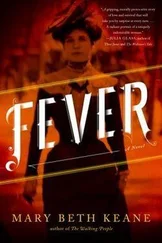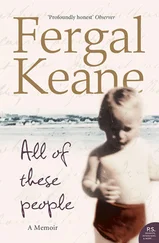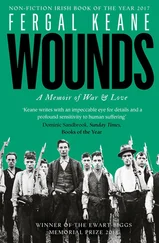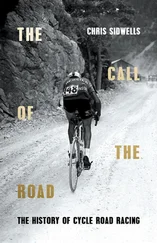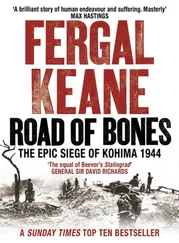The drama lasted for an hour and when the Japanese had gone Mellican looked around at a scene of carnage. There were fires and delayed explosions. Wounded men were crying out for help. One Bofors gun had taken a direct hit. Mellican was called out later that night to help remove the dead. ‘The bodies were mangled, heads, limbs sprawled all over, and even the gun was splashed with flesh and brains sticking on metal.’ They were all boys Mellican had known. An officer ordered that nobody was to leave until the mess had been cleaned up.
‘We made makeshift stretchers from bits of wood, e.g. damaged furniture and doors. “Have you got an arm or a leg?” calls were made and eventually we had six figures ready. I recognised only two of them, “F. B.” and “J. K.”’ Both were boys Mellican had known from his schooldays. As he helped carry a stretcher away it became tangled in a hedge. When he looked back he saw that the intestines of the dead boy had caught in the hedge and unravelled. With his hands he freed the spilling guts and placed them gently back under the blanket. That night he slept in a bunkhouse that was quiet with the shock of war.
The crisis was compounded by problems of command at every level. Brooke-Popham, the C-in-C Far East, whose responsibilities included Malaya, Singapore and Burma, succumbed to the pressure of events and was replaced. In late December a new commander, General Sir Archibald Wavell, was sent to establish the short-lived ABDACOM, * a unified allied command based in Java, which was described by the Chief of the Imperial General Staff (CIGS), General Sir Alan Brooke, as a ‘wild and half-baked’ scheme. In the space of a few months, responsibility for operations in Burma shifted first to India, then to ABDACOM, and finally back to India. In Rangoon there was similar confusion. The GOC Burma, Lieutenant General D. K. McLeod, who had spent much of his life as a staff officer, was replaced on 27 December by Lieutenant General T. J. Hutton, who was himself sacked two months later. An Associated Press report from London had welcomed Hutton’s appointment and spoke of how ‘much has been done to strengthen the land forces which Lt. Gen. Hutton now takes over’. It was the propaganda of illusion, as the defenders would soon discover.
The Japanese launched their ground offensive from Thailand on 8 January. They sent two divisions against one and half British and Indian divisions. † But it was the quality of troops and command, not the numbers, that really mattered. When General Hutton failed to stem the advance he was replaced, on 5 March, by General Harold Alexander, a favourite of Churchill’s, who acknowledged that never had he ‘taken the responsibility of sending a general on a more forlorn hope’.
The official verdict on the failure to protect Burma would not emerge for another decade. But the conclusion was damning: ‘The effect that the loss of Rangoon would have on the British war effort was well known to the War Cabinet, the Chiefs of Staff and to all commanders in the Far East … Yet, despite the breathing space of six weeks between the outbreak of war and the start of the Japanese drive into southern Burma, no adequate steps were taken to build up the forces required … Burma still remained practically defenceless.’
An Irish engineer, Professor W. H. Prendergast, working for the Indian Railways, was sent to Rangoon to see what help was needed by his counterparts on the Burma Railways, who were struggling to keep their locomotives running. ‘In the streets of this great thriving city nothing was to be seen but the scurrying jeeps, the criminals, the looters and the insane. No one was left except a small band of “Last Ditchers” and garrison troops who had volunteered to remain until the end.’ British troops and police shot looters. ‘Others, both soldiers and civilians, were punished by caning.’ The official history of the Indian Army described how ‘the deserted city and oil refineries and shattered storage tanks along the river presented an awe-inspiring spectacle as huge columns of flame leapt skyward beneath a vast canopy of smoke.’
Prendergast witnessed the last train departing Rangoon steaming slowly away and noted how ‘behind it pathetically followed, the spaniels, the Airedales, the terriers, all the big and little pets with their appealing eyes saying “Surely you cannot abandon US”.’ He travelled from one bombed station to another, helping with repair work. One morning he found the bodies of eighteen people who had died from cholera during the night. The American war correspondent Clare Boothe described the destruction by fire of part of the ancient royal capital of Mandalay in a dispatch for Life magazine. ‘It was to me a smell not unfamiliar. I remember, one hot summer, when I was a child, a dog died under our veranda porch … It was that smell. But a thousand times magnified until it seemed, as we whirled through the streets, all creation stank of rotting flesh … Here and there on the side of the streets lay a charred and blackened form swaddled in bloody rags, all its human lineaments grotesquely foreshortened by that terrible etcher – fire.’
Japanese air raids on the cities drove people into the countryside. Gripped by panic, the large Indian population of Burma, many of them labourers who worked in the mines or in the fields, headed towards the border with India. Some of the wealthier and more influential sought a passage by air or boat, but with limited space, and with priority given to whites, money was no guarantee of a seat. Nor was it always safe to attempt escape by air, as the Japanese enjoyed command of the skies. For the majority who set out on foot the journey meant navigating a mixture of terrain that exhausted even the strongest among them. The route north to safety lay over nine hundred miles of jungle, scrub, swamps and high mountain passes. It meant trying to ford raging rivers and struggling to gain a footing on liquid mud paths over mountains that rose to more than 8,000 feet.
The refugee columns were shadowed by flocks of vultures. The carrion-feeders settled in the trees over temporary camps or waited on the fringes of small groups whose members were too exhausted to move any further. It is the sound, rather than the sight, of vultures feasting that stays in the mind, an obscene cracking and tearing, which rose from countless roadside encampments on the retreat. There were anguished scenes as the elderly, so often the first to fall sick, urged younger family members to go on without them. A British eyewitness recalled seeing children with ‘distended bellies supported on sticks of legs, and all of them moved slowly, dragging along with expressionless faces, eyes on the ground and bodies wasted to the bone’. Of the more than half a million people who fled across the border to India over five months of the retreat, an estimated 80,000 died from a catalogue of diseases – cholera, dysentery, scrub typhus and malaria – and from the effects of malnutrition and exhaustion. * The dead lay all along the routes towards India. A British army officer carrying out a reconnaissance of the route north described a clearing where a band of refugees had expired: ‘I found the bodies of a mother and child locked in each other’s arms. In another hut were the remains of another mother who had died in childbirth, with the child only half born … A soldier had expired wearing his side cap, all his cotton clothing had rotted away, but the woollen cap sat smartly on the grinning skull. Already the ever destroying jungle had overgrown some of the older huts, covering up the skeletons and reducing them to dust or mould.’ The Scotsman, George Rodger, who would become a famous war cameraman, encountered a constant stream of fleeing people and was struck by ‘the incongruity of the items they had chosen to salvage from their homes … One man carried a cross-cut saw over his shoulder, another lugged along a large tom-tom, several had umbrellas, and one carried a bicycle with the back wheel missing …’
Читать дальше


